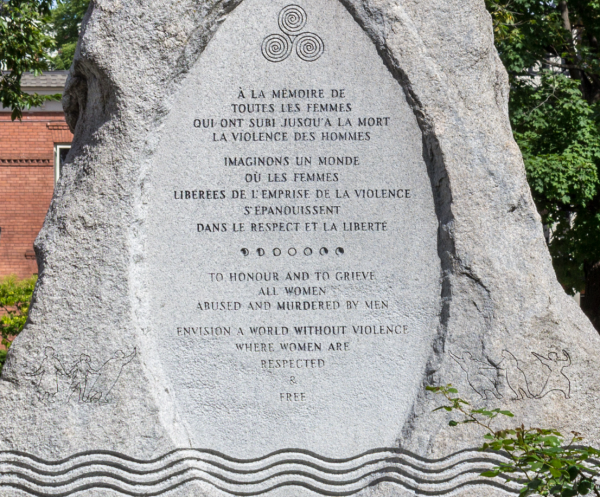
Enclave, Ottawa Women’s Monument – Minto Park, Ottawa, Ontario Canada
“To honour and to grieve
all women
abused and murdered by men
Envision a world without violence
where women are
respected
&
free”.
This is the engraving on the Enclave, Ottawa Women’s Monument which lies only 3 kilometres from our offices at the Senate. I visit this monument every chance I get, to reflect, to remember. But since the brutal killing of 14 women almost 30 years ago, are we doing enough to stop violence against women?
Statistics say that 67% of Canadians know a woman who experienced physical or sexual abuse, and every six days a woman’s life is taken by her intimate partner. Sexual assault is the only violent crime that is not in decline in Canada, and it is also the least reported to police by women.
The situation is not better worldwide. UN Women studies say that one in every three women experienced physical abuse by her partner. The numbers are shocking.
- Women and girls account for 72% of all human trafficking victims detected globally.
- 650 million women and girls in the world today were married before age 18.
- At least 200 million women and girls aged 15-49 have undergone female genital mutilation.
- 15 million adolescent girls (aged 15 to 19) worldwide have experienced forced sex.
- Less than 40 per cent of the women who experience violence seek help of any sort.
The Canadian government has been taking action by launching a federal strategy on gender-based violence, committing $200 million to expand the efforts. For some, this might seem like too much money but according to the Canadian Women’s Foundation, every year Canadians collectively spend $7.4 billion to deal with the aftermath of spousal violence alone.
“His hands just kept slapping my face over and over. It felt like fire is burning through my face. My 2 year old child was there, and I could see tears running down her face. All I could think about was my baby and how this might happen to her one day by him, or by any other man. In the middle of it all, I kept telling myself that I will do my best to not let this affect my baby’s psychology. I could think of one thing: I should not cry; I should not break down. So I held it in. For years later, I could not shed a tear. I sought help from both our families, but I got the same question: What did you do to provoke him? I thought if our families didn’t help, why would the police care. I never reported him. I just focussed all my strength to take my child and leave him. Twenty years down the line, I still run.”
This story is one of so many, and this woman is considered very lucky. She only got hit. She didn’t suffer injuries. She is still alive.
For how many more years will we have to speak about violence against women?